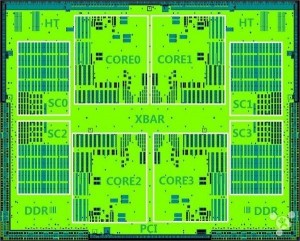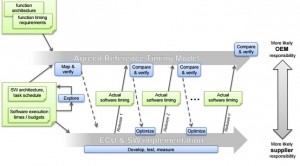 China-based Loongson has announced two 64-bit quad core processors based around a MIPS-derived architecture and including binary translation to run x86 and ARM code.
China-based Loongson has announced two 64-bit quad core processors based around a MIPS-derived architecture and including binary translation to run x86 and ARM code.
The nine stage pipelined architecture is called GS464E, and the 4-way superscalar processors are Loongson-3A2000 and 3B2000 – and include in-order execution units, two floating-point units, a memory management unit, and crossbar interconnect.
“Thanks to a series of significant microarchitectural enhancements, performance figures for the new chips show a 2.7x improvement over the previous generation cores [3A1000 and 3B1000],” said Alexandru Voica, spokesman for Imagination Technology, owner of the MIPS processor architecture.
The 3B series includes the 1.5GHz 3B1500. “Platforms integrating an octa-core 3B1500 configuration can deliver up to 192Gflops of peak performance at only 30W,” said Voica.
GS464E executes the ‘LoongISA’ instruction set with over 1,400 instructions including:
- MIPS64 Release 3 instructions
- The binary translation to run x86 and ARM code – called ‘LoongBT’
- LoongVM instructions for custom virtual machines
- LoongSIMD instructions for 128- and 256-bit vector arithmetic operations
Loongnix is a Linux distribution optimized for the GS464E.
More processors are planned. “Loongson chief architect Hu Weiwu confirmed to Imagination that his team plans to release two chips in 2016: 3A3000 and 3B3000, built on a 28nm process and clocked closer to 2GHz,” said Voica.



